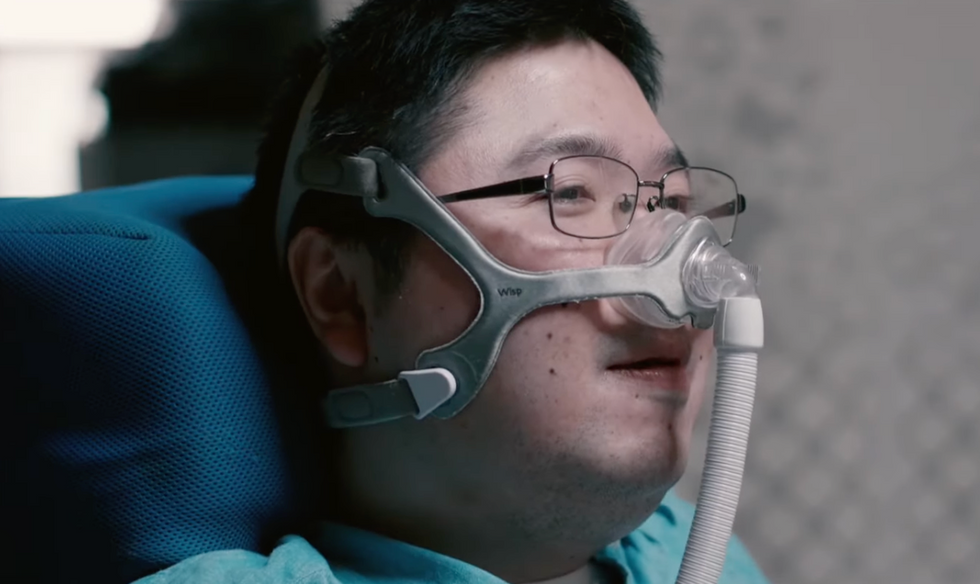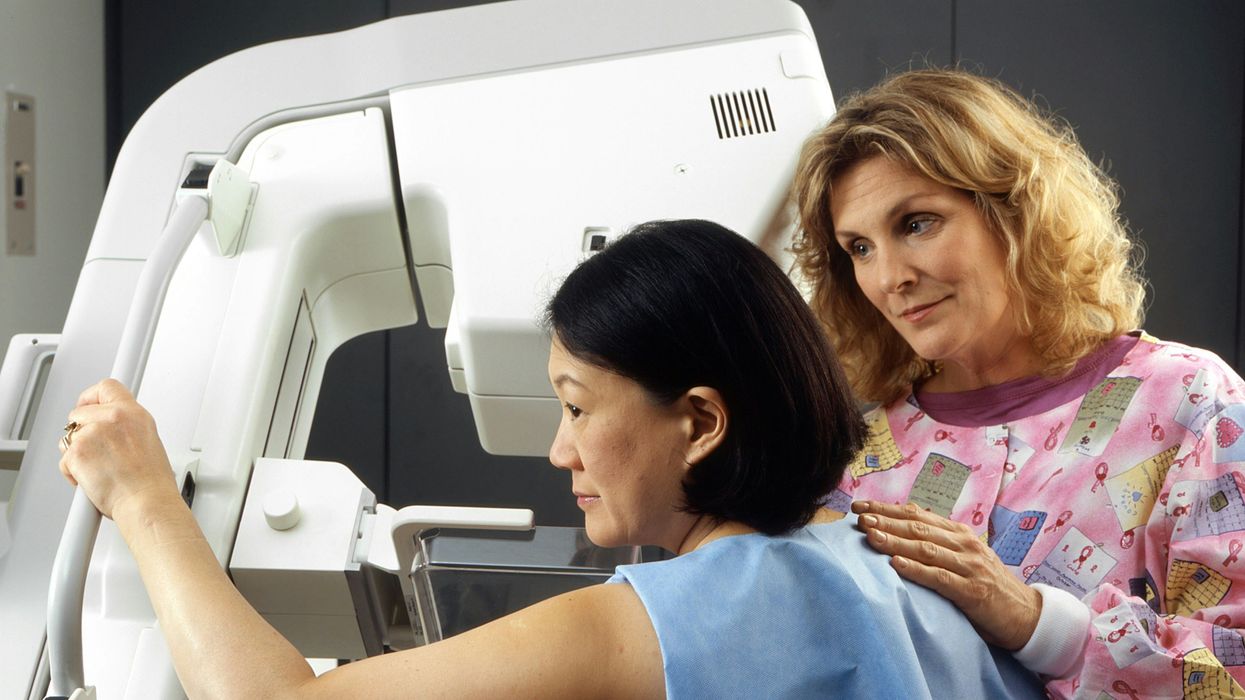The Best Coronavirus Experts to Follow on Twitter
Kira Peikoff was the editor-in-chief of Leaps.org from 2017 to 2021. As a journalist, her work has appeared in The New York Times, Newsweek, Nautilus, Popular Mechanics, The New York Academy of Sciences, and other outlets. She is also the author of four suspense novels that explore controversial issues arising from scientific innovation: Living Proof, No Time to Die, Die Again Tomorrow, and Mother Knows Best. Peikoff holds a B.A. in Journalism from New York University and an M.S. in Bioethics from Columbia University. She lives in New Jersey with her husband and two young sons. Follow her on Twitter @KiraPeikoff.

Following these experts on social media will help you stay well-informed about the coronavirus. Global virus and disease spread, coronavirus.
As the coronavirus tears across the globe, the world's anxiety is at a fever-pitch, and we're all craving information to stay on top of the crisis.
But turning to the Internet for credible updates isn't as simple as it sounds, since we have an invisible foe spreading as quickly as the virus itself: misinformation. From wild conspiracy theories to baseless rumors, an infodemic is in full swing.
For the latest official information, you should follow the CDC, WHO, and FDA, in addition to your local public health department. But it's also helpful to pay attention to the scientists, doctors, public health experts and journalists who are sharing their perspectives in real time as new developments unfold. Here's a handy guide to get you started:
VIROLOGY
Dr. Trevor Bedford/@trvrb: Scientist at the Fred Hutchinson Cancer Research Center studying viruses, evolution and immunity.
Dr. Benhur Lee/@VirusWhisperer: Professor of microbiology at the Icahn School of Medicine at Mount Sinai
Dr. Angela Rasmussen/@angie_rasmussen: Virologist and associate research scientist at Columbia University
Dr. Florian Krammer/@florian_krammer: Professor of Microbiology at the Icahn School of Medicine at Mount Sinai
EPIDEMIOLOGY:
Dr. Alice Sim/@alicesim: Infectious disease epidemiologist and consultant at the World Health Organization
Dr. Tara C. Smith/@aetiology: Infectious disease specialist and professor at Kent State University
Dr. Caitlin Rivers/@cmyeaton: Epidemiologist and assistant professor at the Johns Hopkins Bloomberg School of Public Health
Dr. Michael Mina/@michaelmina_lab: Physician and Assistant Professor of Epidemiology & Immunology at the Harvard TH Chan School of Public Health
INFECTIOUS DISEASE:
Dr. Nahid Bhadelia/@BhadeliaMD: Infectious diseases physician and the medical director of Special Pathogens Unit at Boston University School of Medicine
Dr. Paul Sax/@PaulSaxMD: Clinical Director of the Division of Infectious Diseases at Brigham and Women's Hospital
Dr. Priya Sampathkumar/@PsampathkumarMD: Infectious Disease Specialist at the Mayo Clinic
Dr. Krutika Kuppalli/@KrutikaKuppalli: Medical doctor and Infectious Disease Specialist based in Palo Alto, CA
PANDEMIC PREP:
Dr. Syra Madad/@syramadad: Senior Director, System-wide Special Pathogens Program at New York City Health + Hospitals
Dr Sylvie Briand/@SCBriand: Director of Pandemic and Epidemic Diseases Department at the World Health Organization
Jeremy Konyndyk/@JeremyKonyndyk: Senior Policy Fellow at the Center for Global Development
Amesh Adalja/@AmeshAA: Senior Scholar at the Johns Hopkins University Center for Health Security
PUBLIC HEALTH:
Scott Becker/@scottjbecker: CEO of the Association of Public Health Laboratories
Dr. Scott Gottlieb/@ScottGottliebMD: Physician, former commissioner of the Food and Drug Administration
APHA Public Health Nursing/@APHAPHN: Public Health Nursing Section of the American Public Health Association
Dr. Tom Inglesby/@T_Inglesby: Director of the Johns Hopkins SPH Center for Health Security
Dr. Nancy Messonnier/@DrNancyM_CDC: Director of the Center for the National Center for Immunization and Respiratory Diseases (NCIRD)
Dr. Arthur Caplan/@ArthurCaplan: Professor of Bioethics at New York University Langone Medical Center
SCIENCE JOURNALISTS:
Laura Helmuth/@laurahelmuth: Incoming Editor in Chief of Scientific American
Helen Branswell/@HelenBranswell: Infectious disease and public health reporter at STAT
Sharon Begley/@sxbegle: Senior writer at STAT
Carolyn Johnson/@carolynyjohnson: Science reporter at the Washington Post
Amy Maxmen/@amymaxmen: Science writer and senior reporter at Nature
Laurie Garrett/@Laurie_Garrett: Pulitzer-prize winning science journalist, author of The Coming Plague, former senior fellow for global health at the Council on Foreign Relations
Soumya Karlamangla/@skarlamangla: Health writer at the Los Angeles Times
André Picard/@picardonhealth: Health Columnist, The Globe and Mail
Caroline Chen/@CarolineYLChen: Healthcare reporter at ProPublica
Andrew Jacobs/@AndrewJacobsNYT: Science reporter at the New York Times
Meg Tirrell/@megtirrell: Biotech and pharma reporter for CNBC
Kira Peikoff was the editor-in-chief of Leaps.org from 2017 to 2021. As a journalist, her work has appeared in The New York Times, Newsweek, Nautilus, Popular Mechanics, The New York Academy of Sciences, and other outlets. She is also the author of four suspense novels that explore controversial issues arising from scientific innovation: Living Proof, No Time to Die, Die Again Tomorrow, and Mother Knows Best. Peikoff holds a B.A. in Journalism from New York University and an M.S. in Bioethics from Columbia University. She lives in New Jersey with her husband and two young sons. Follow her on Twitter @KiraPeikoff.
A robot server, controlled remotely by a disabled worker, delivers drinks to patrons at the DAWN cafe in Tokyo.
A sleek, four-foot tall white robot glides across a cafe storefront in Tokyo’s Nihonbashi district, holding a two-tiered serving tray full of tea sandwiches and pastries. The cafe’s patrons smile and say thanks as they take the tray—but it’s not the robot they’re thanking. Instead, the patrons are talking to the person controlling the robot—a restaurant employee who operates the avatar from the comfort of their home.

It’s a typical scene at DAWN, short for Diverse Avatar Working Network—a cafe that launched in Tokyo six years ago as an experimental pop-up and quickly became an overnight success. Today, the cafe is a permanent fixture in Nihonbashi, staffing roughly 60 remote workers who control the robots remotely and communicate to customers via a built-in microphone.
More than just a creative idea, however, DAWN is being hailed as a life-changing opportunity. The workers who control the robots remotely (known as “pilots”) all have disabilities that limit their ability to move around freely and travel outside their homes. Worldwide, an estimated 16 percent of the global population lives with a significant disability—and according to the World Health Organization, these disabilities give rise to other problems, such as exclusion from education, unemployment, and poverty.
These are all problems that Kentaro Yoshifuji, founder and CEO of Ory Laboratory, which supplies the robot servers at DAWN, is looking to correct. Yoshifuji, who was bedridden for several years in high school due to an undisclosed health problem, launched the company to help enable people who are house-bound or bedridden to more fully participate in society, as well as end the loneliness, isolation, and feelings of worthlessness that can sometimes go hand-in-hand with being disabled.
“It’s heartbreaking to think that [people with disabilities] feel they are a burden to society, or that they fear their families suffer by caring for them,” said Yoshifuji in an interview in 2020. “We are dedicating ourselves to providing workable, technology-based solutions. That is our purpose.”

Shota, Kuwahara, a DAWN employee with muscular dystrophy, agrees. "There are many difficulties in my daily life, but I believe my life has a purpose and is not being wasted," he says. "Being useful, able to help other people, even feeling needed by others, is so motivational."
A woman receives a mammogram, which can detect the presence of tumors in a patient's breast.
When a patient is diagnosed with early-stage breast cancer, having surgery to remove the tumor is considered the standard of care. But what happens when a patient can’t have surgery?
Whether it’s due to high blood pressure, advanced age, heart issues, or other reasons, some breast cancer patients don’t qualify for a lumpectomy—one of the most common treatment options for early-stage breast cancer. A lumpectomy surgically removes the tumor while keeping the patient’s breast intact, while a mastectomy removes the entire breast and nearby lymph nodes.
Fortunately, a new technique called cryoablation is now available for breast cancer patients who either aren’t candidates for surgery or don’t feel comfortable undergoing a surgical procedure. With cryoablation, doctors use an ultrasound or CT scan to locate any tumors inside the patient’s breast. They then insert small, needle-like probes into the patient's breast which create an “ice ball” that surrounds the tumor and kills the cancer cells.
Cryoablation has been used for decades to treat cancers of the kidneys and liver—but only in the past few years have doctors been able to use the procedure to treat breast cancer patients. And while clinical trials have shown that cryoablation works for tumors smaller than 1.5 centimeters, a recent clinical trial at Memorial Sloan Kettering Cancer Center in New York has shown that it can work for larger tumors, too.
In this study, doctors performed cryoablation on patients whose tumors were, on average, 2.5 centimeters. The cryoablation procedure lasted for about 30 minutes, and patients were able to go home on the same day following treatment. Doctors then followed up with the patients after 16 months. In the follow-up, doctors found the recurrence rate for tumors after using cryoablation was only 10 percent.
For patients who don’t qualify for surgery, radiation and hormonal therapy is typically used to treat tumors. However, said Yolanda Brice, M.D., an interventional radiologist at Memorial Sloan Kettering Cancer Center, “when treated with only radiation and hormonal therapy, the tumors will eventually return.” Cryotherapy, Brice said, could be a more effective way to treat cancer for patients who can’t have surgery.
“The fact that we only saw a 10 percent recurrence rate in our study is incredibly promising,” she said.

